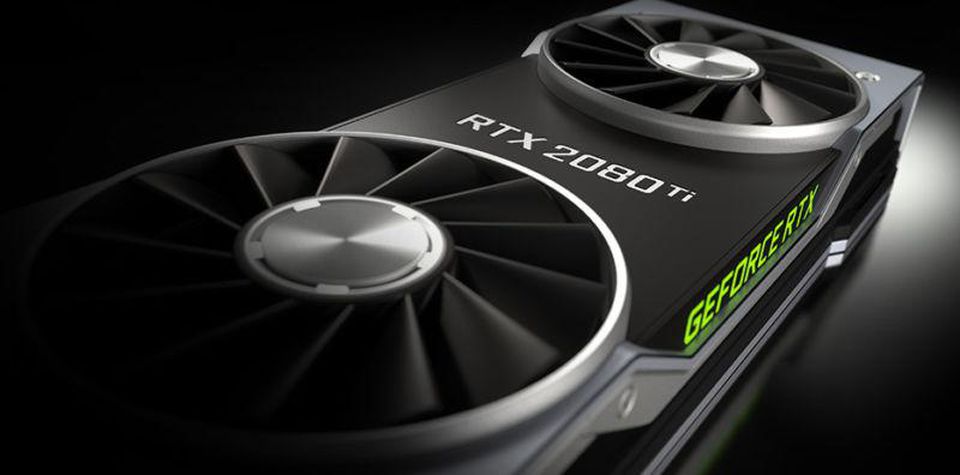It is timely to assess Nvidia from a fundamental valuation point of view. For EasyEquities investors who are invested in Tencent indirectly through Naspers, this is of real interest. Nvidia is a world leader in graphics processing units for gaming, which is the largest source of revenue for Tencent at 35%. Some may see the stock as expensive, but the pace of innovation suggests that high levels of earnings growth are likely for the foreseeable future.
“Turing Up the Innovation”
Nvidia [NASDAQ:NVDA]
Share price: $278
Net shares in issue: 607 million
Market cap: $169 billion
Forward PE ratio: 35.0x
Fair value DCF: $303
Portfolio Buy
What you need to know:
There is also a lot more to Nvidia than gaming, which is the largest entertainment industry. Tesla watchers will be interested to note that the automotive segment is growing. Nvidia’s Automotive segment is comprised of infotainment solutions, advanced driver assistance systems, and AV opportunities.
They leverage technology in AI to deliver a full solution for the AV market under the DRIVE brand. There are multiple applications of AI within the car - AI can drive the car itself as a pilot, in either partial or fully autonomous mode, AI can also be a co-pilot, assisting the human driver in creating a safer driving experience.
In August, Nvidia reinvented computer graphics with the launch of the NVIDIA Turing GPU architecture. Turing features new technology to accelerate ray tracing and artificial intelligence inferencing, making real-time ray tracing possible. These two features, along with simulation and enhanced rasterization, brings in a new generation hybrid rendering for the large visual effects industry.
Hybrid rendering gives a cinema quality interactive experiences, with new effects powered by neural networks and fluid interactivity. Nvidia also launched other revolutionary Turing-based products for designers and artists across various industries.

The eighth-generation graphics processing unit architecture means that Turing is the world-first ray-tracing GPU. It is the product of an astonishing 10,000 engineering-years. Through Turing hybrid rendering, applications can simulate the physical world at 6x the speed of the previous Pascal generation.
The launch of Summit makes it the world’s fastest supercomputer, powered by more than 27,000 NVIDIA Volta Tensor Core GPUs. Five of the world’s seven fastest supercomputers are powered by NVIDIA GPUs.
NVIDIA HGX-2 is the first unified computing platform for both AI and high-performance computing. Cloud service providers are also building systems incorporating HGX-2. Google Cloud integrated NVIDIA Tesla P4 GPU optimized for AI inference and graphics virtualization. Nvidia also launched AIRI Mini with Pure Storage and ONTAP AI with NetApp, providing enterprises with an easy, modular approach for implementing and scaling deep learning.
In Gaming, there are now 25 Max-Q GeForce gaming notebook designs offered by all major manufacturers, enabling high-end performance for thin and light notebooks. The next-generation NVIDIA G-SYNC HDR displays are on the market, delivering high-quality, stutter-free gaming.
In the automotive industry, Daimler and Bosch have selected NVIDIA’s DRIVE platform to bring fully automated and driverless vehicles to city streets, with pilot testing beginning next year in Silicon Valley.
The recent quarterly results were strong with good year-on-year growth in revenue and healthy profitability and cash flow. Unlike the dotcom bubble, many tech companies today are profitable and cash generative which also underpins relatively rich valuations.
Nvidia has four segments, Datacentre, Gaming, Professional Visualization, and Automotive. All these segments performed well, with Datacentre revenue alone up 83% for the quarter with Gaming growing by 52%.
For the three months ended 29 July 2018, revenue grew by 40.0% year-on-year to $3.1 billion whilst for the six months revenue grew by 52% to $6.3 billion compared with 2017. Gross profit is up 52% year-on-year to $2.0 billion and up by 65% for the six months to over $4.0 billion. Gross margin is a chunky 64% for the half-year. On an adjusted basis, net income for Q2 was up 90% to $1.2 billion whilst six-month net income increased by 113% to $2.5 billion. Consequently, adjusted earnings per share for the quarter grew by 92% to $1.92 with EPS for the six months up by 113% to $3.99. Importantly, earnings per share are very close to cash flow per share, meaning that Nvidia is good at turning profits in to cold cash.
Moreover, Nvidia had positive free cash flow for the quarter and six months ended June 2018, $785 million and $2.1 billion respectively. This is complemented by a cash-rich balance sheet. Of the total assets of $12.9 billion, no less than $7.9 billion is cash or marketable securities. That means 62% of total assets is cash. Against that is $2.0 billion of debt. So net cash is $5.9 billion – that is the equivalent of R90 billion. Shareholder equity is $8.8 billion so two-thirds of shareholder equity is cash. Net asset value per share is $14.48.
During the first half of fiscal 2019, Nvidia returned $837 million to shareholders through a combination of $655 million in share repurchases and $182 million in quarterly cash dividends. For fiscal 2019, Nvidia intends to return $1.25 billion to shareholders through ongoing quarterly cash dividends and share repurchases. Nvidia will pay its next quarterly cash dividend of $0.15 per share on 21 September 2018, to shareholders of record on 30 August 2018. That suggests 60 US cents per share in dividend for the year ending January 2019. In F2018 the dividend was 57.0 US cents per share and in F2017 the payment was 48.5 cents per share.
I estimate EPS of $7.90 for the year to January 2019, which is an increase of 60% on the $4.92 in F2018. Whilst the pace of earnings growth could slow in coming years the combination of high levels of innovation, reinvestment, and customer receptiveness to the technology and its applications, and the horizontal diversification to automotive and other areas mean Nvidia is likely to remain a powerful force in technology for years to come.
At $278 per share, the stock has increased by 42% year-to-date, starting the year at around $200. The share price was $60 two years ago. However, earnings growth has been rapid and continues to be. Between F2016 and F2019 EPS will have increased 7-fold.
At $278, Nvidia is on a forward F2019 PE ratio of 35x, which falls to 28x on F2020 earnings. For a company with cash rich earnings and a ton of innovative capability, this is not overly pricey. It is less pricey than some JSE listed retailers.
Nvidia continues to rate as a Portfolio Buy and a US listed stock Easy Equities customers will relate well too and which is at the cutting edge of 21st Century technology.
M N INGHAM
Did you find this note insightful? Read Barry's technial insights on Nvidia
'What's the Beef: Nvidia (NVDA)'.
